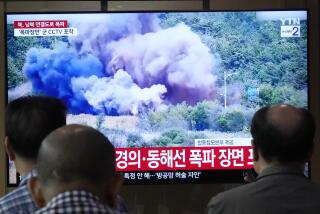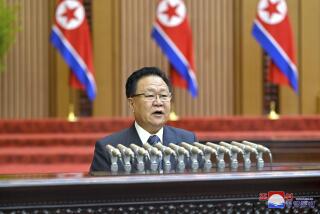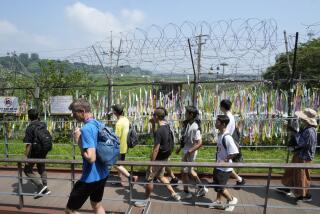Life Along the DMZ
Fifty years ago, South Korea and North Korea signed an armistice ending a war that claimed more than 4.5 million lives. The country was divided by a buffer zone 150 miles long and roughly 2 1/2 miles wide, a demilitarized zone, effectively a dead zone to both sides.
I’ve traveled to Asia dozens of times, and made several stops in South Korea. Never have I been there when the tensions were as high as they are today, now that the North has threatened to resume a nuclear program that the United Nations, led by the United States, wants to stop. If this cold war turns hot again, the price would be steep, for the weapons of today are exponentially more destructive than they were in 1953.
For five days in January, I traveled along the south side of the DMZ on an assignment to photograph conditions near this border that separates 48 million Koreans on the south from 22 million Koreans on the north. Curiously, many of the villagers I spoke with refuse to view the current escalation as a threat. Unification, not confrontation, is the word of the day.
I felt no anti-American sentiment either in the villages or on the streets of Seoul, 30 miles south of the zone. Yet the recent rallies against the United States and the presence of riot police surrounding the American Embassy are obvious indications that all is not well between many South Koreans and the U.S. government.
People I spoke with in the South admit that the North Korean government has more than a little blood on its hands. But they seem to fear the actions of the United States more than those of North Korean leader Kim Jong Il. They believe that the United States could reignite fighting by pushing too hard to stop the nuclear program. In this they agree with North Korean diplomat Kim Ryong Song, who said at Cabinet-level talks in Seoul in January: “The danger of a war that threatens peace on the Korean Peninsula is coming from the outside, not from within.”
In the South, they favor continuing a “sunshine policy” of engagement, and hope incoming president Roh Moo Hyun will lead them to reconciliation and eventual unification.
More to Read
Sign up for Essential California
The most important California stories and recommendations in your inbox every morning.
You may occasionally receive promotional content from the Los Angeles Times.










